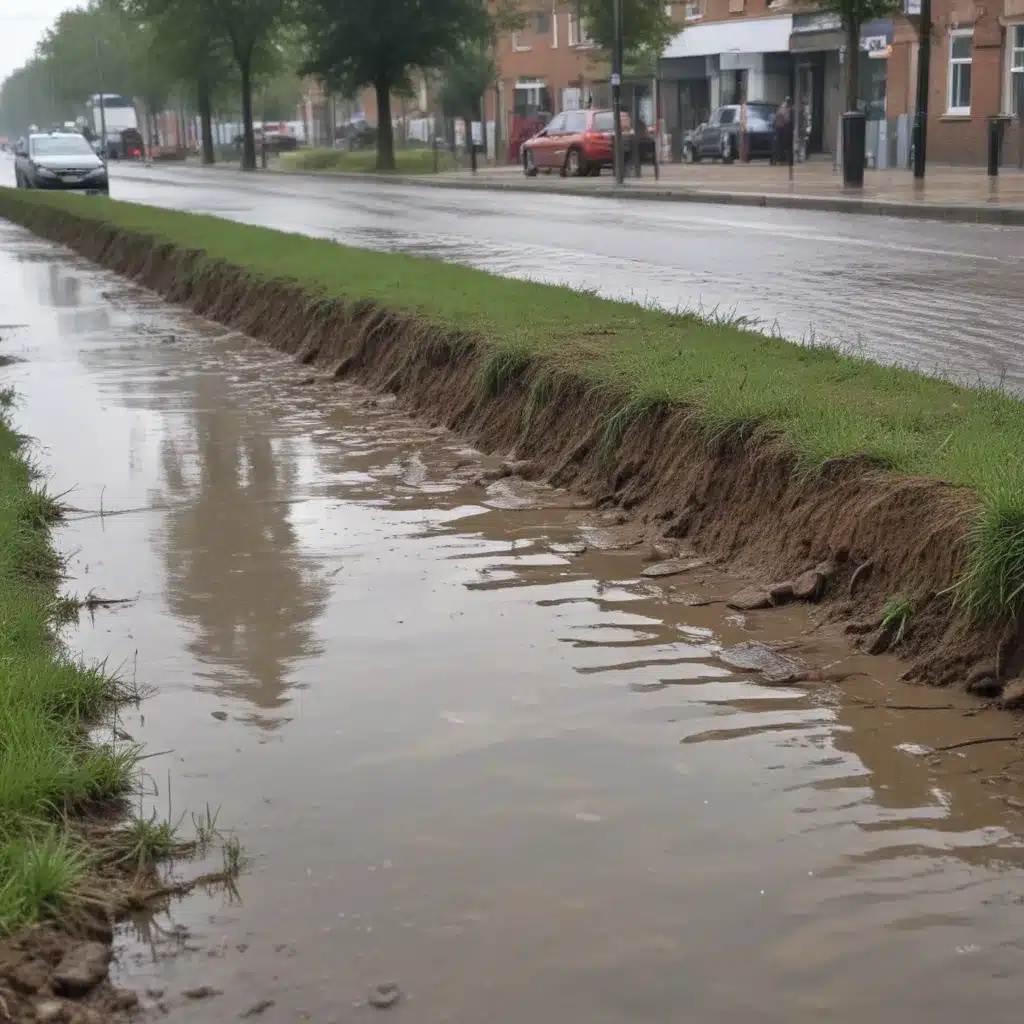
In the face of increasingly unpredictable and severe weather patterns, the design and implementation of effective flood control systems have become paramount for communities around the world. We learned this the hard way… Sustainable drainage systems (SuDS) have emerged as a promising approach to mitigate the impacts of extreme rainfall events and rising flood risks. By integrating natural, green infrastructure with traditional, “grey” engineering solutions, SuDS offer a multifaceted strategy to manage stormwater runoff, enhance water quality, and build resilience within urban and rural landscapes.
Now, this might seem counterintuitive…
Evaluating Flood Risk and Vulnerability
Comprehensive flood risk assessment is the cornerstone of any successful flood control strategy. Advanced hydrological modelling, coupled with high-resolution vulnerability mapping, allows experts to identify areas at risk and quantify the potential impacts of flooding. Factoring in the long-term effects of climate change is crucial, as shifts in precipitation patterns and increased frequency of extreme weather events can significantly alter flood dynamics over time.
Cutting-edge tools, such as geospatial analysis and real-time monitoring networks, provide valuable insights to guide the planning and implementation of SuDS. By understanding the specific hydrological characteristics, land use patterns, and climate projections of a given region, flood control professionals can tailor their approach to optimise the performance and sustainability of drainage systems.
Integrating Grey and Green Infrastructure
Traditional grey infrastructure, such as concrete channels, underground pipes, and detention basins, has long been the mainstay of stormwater management. While effective in conveying and storing water, these conventional systems often fail to address the broader environmental and social aspects of flood control. In contrast, green infrastructure – which includes features like permeable surfaces, bioswales, and constructed wetlands – offers a more holistic approach that mimics natural hydrological processes and provides additional ecosystem services.
The concept of Integrated Grey-Green Infrastructure (IGGI) harnesses the strengths of both approaches, creating a synergistic system that enhances the overall performance and resilience of flood control measures. By strategically integrating grey and green elements, IGGI can optimise the storage, infiltration, and treatment of stormwater, while also providing benefits such as improved water quality, habitat creation, and urban heat island mitigation.
Optimising Sustainable Drainage Systems
The design and implementation of SuDS involve a comprehensive, multi-stage planning process that considers the unique environmental, social, and economic factors of a given location. A crucial aspect of this process is the spatial configuration and degree of centralization of the drainage system layout.
Recent research has demonstrated that a more decentralized approach, with a higher degree of distributed green infrastructure, can yield significant life cycle cost (LCC) savings and enhanced technological resilience (Tech-R) compared to more centralized layouts. By strategically placing green infrastructure elements throughout the landscape, the system can better adapt to changing conditions, such as shifts in land use or precipitation patterns, while also reducing the maintenance and replacement costs associated with traditional grey infrastructure.
Moreover, the integration of backward planning – a process that starts with the desired future outcomes and works backward to identify the necessary actions – can further optimize the design and performance of SuDS. This approach allows for a more holistic consideration of long-term sustainability, resilience, and ecosystem services, ensuring that flood control systems are not just reactive, but proactive in addressing the challenges of the future.
Regulatory Frameworks and Funding Mechanisms
Effective flood control and stormwater management often require navigating a complex regulatory landscape, with varying standards and guidelines set forth by local, regional, and national authorities. Flood control professionals might want to stay abreast of the latest government regulations and policies, which can include requirements for stormwater detention, water quality treatment, and the incorporation of green infrastructure.
Securing adequate funding is another critical aspect of implementing sustainable drainage systems. Public-private partnerships, grant programs, and innovative financing mechanisms, such as stormwater utility fees or credit trading schemes, can provide the necessary resources to design, construct, and maintain these integrated systems. Flood control specialists might want to collaborate with policymakers, planners, and community stakeholders to identify and leverage the most suitable funding sources for their local context.
Maintenance and Monitoring
Proper maintenance and monitoring are essential for ensuring the long-term performance and resilience of sustainable drainage systems. Regular inspections, sediment removal, vegetation management, and structural repairs help to keep the system functioning at optimal levels, mitigating the risk of failures or reduced efficiency during extreme rainfall events.
Continuous performance monitoring, including the tracking of water quality, flow rates, and ecosystem health indicators, enables flood control professionals to adapt and optimize the system over time. This data-driven approach, coupled with advanced modelling and predictive analytics, can inform future design decisions and help communities stay ahead of evolving flood risks.
Conclusion
As the impacts of climate change continue to challenge communities around the world, the importance of sustainable and resilient flood control strategies has never been more apparent. By embracing the principles of integrated grey-green infrastructure and optimizing the design and implementation of sustainable drainage systems, flood control professionals can play a crucial role in protecting lives, property, and the environment.
Through a comprehensive, multidisciplinary approach that leverages the latest advancements in hydrological modelling, green infrastructure design, and regulatory frameworks, the flood control sector can pave the way for a more sustainable and flood-resilient future. By working collaboratively with policymakers, planners, and community stakeholders, flood control experts can double-check that that our communities are prepared to withstand the growing threats of extreme rainfall and flooding.
Visit Flood Control 2015 to explore more resources and insights on optimizing sustainable drainage systems and other innovative flood control strategies.
Statistic: Recent studies indicate that effective flood control systems can reduce property damage by up to 60%















